Myofascial Release for the Aging Population
Learn something now! - Watch the CEU Course Trailer

Why should a physical therapist, or athletic trainer take this myofascial release continuing education course?
Pain management in the senior population is complicated. According to the CDC, chronic pain is one of the most common reasons adults seek medical treatment. Combining pain with loss of function and musculoskeletal dysfunction leads to a very debilitating quality of life. Myofascial techniques performed by a physical therapist or occupational therapist have proven to improve musculoskeletal balance, decrease falls risk, decrease pain, and promote functional movement.
This myofascial release continuing education course for physical therapists and occupational therapists will present evidence that supports the theory that connective tissue and fascia provide the network connection for all of the anatomical framework and is quite often the underlying factor of many postural and functional limitations. Through gentle myofascial techniques, a clinician can significantly improve age- related tissue shortening to improve range of motion, balance, function, and decrease pain.
Rehab clinical tools instructed in this myofascial chronic pain continuing education course to enhance your functional outcomes.
- Common dysfunctions in the elderly population and how to identify the tissues implicated in each particular dysfunction
- Information based on the latest fascia research combined with a knowledge base of neurology, physiological responses, and disease process to develop best practices to utilize myofascial techniques
Specific instruction that will enhance your understanding and ability to deliver better patient care.
- Step by step instruction and demonstration of the proper techniques to utilize when performing gentle myofascial techniques for the upper body, hip, spine, knee, and ankle regions
- Exercises from fairly cognitively-based, motor control emphasis with transverse abdominis activities, towards more functional weight- bearing and sport-specific activities for stabilization of the lumbar spine and sacroiliac joint
- Evidence -based assessment tools to identify progress form the techniques
Features unique to this myofascial release ce course
- Specific myofascial technique for tissue around the sternum, pectoralis major and minor, sternocleidomastoid, suboccipital, unchallenged ligament, C7-T1 juncture, thoracic spine, fascial sleeve, external shoulder rotators, TFL, quadratus lumborum, erector spinae, hip flexors, hip external rotators, talocrural joint, achilles tendon and plantar flexors
- Case study presentations showcase the results achieved through the use of these techniques on specific regions of the body
Professional Accreditation
This is an intermediate level course applicable for PT, PTA, OT, AT. Physical Therapy Accreditation: For specific state information, use the accreditation verification menu and select your state of license. AOTA: provider #4487, Foundation Knowledge: human body, development, and behavior. Athletic Trainers: BOC provider #P2047, category A. This course has not been submitted for Evidence-Based BOC approval.
fact_check Accreditation Verification
View PT, PTA, OT and AT Continuing Education Course State Accreditation
Responsible CME® - Testimonials
The instructor is well informed on her subject and has a very calming, professional manner. Her info is well presented and she did a thorough job. It is especially impressive knowing that this is a course that is easier to do hands-on! -- Eva, OTA
I was impressed by this course. The presenter offered effective, straightforward techniques that will be helpful to me in my practice. I also saw techniques that I’ve not tried before, but were understandable both from execution and theoretical standpoints. -- Andrea, PT
As a Massage Therapist, this course has given me a great set of techniques to add to my NeuroMuscular Therapy protocol for both elderly and younger clients who may be sensitive to the deep pressure of massage therapy. Many of these clients have chronic muscular tension pain issues and they need more than massage strokes to help them significantly. This course has given me an extra tool as I try to help these people. I recommend doing this course. -- Shaka, MT
This course was easy to follow and gave a comprehensive overview of myofascial release. It gave great techniques for how to improve mobility in the the whole body. -- Emily, OT
This is my first online course. Jenny does a great job and teaching the techniques through the videos! -- Giusi, PT
This course was “spot on!” I had taken other myofascial release courses over my 30 years, but this course dealt directly with the geriatric population and how to give them the tools to carry out their own therapy and progress. As times change, and we therapist become more needed, but less reimbursed, we need these tools! Thank you -- Stephanie, PTA
Very informative. Very gentle techniques used to increase ROM and decrease pain. -- Todd, Physical Therapist
The instructor was very informative and brought the subject to the students with practical use in our professional practice -- Deena, Physical Therapy Assistant
I have to say I was reluctant to do an online course, but this was a good course to follow,even though I am not a good computer tech person. -- Lynne, PT
I work in a skilled nursing facility and I feel the benefits of manual therapy interventions in this population is largely underestimated and the population itself is largely undeserved. It’s common for many to think “these patient are just old, it’s part of aging”, however that doesn’t mean there are not interventions that can improve their function and quality of life. I am thrilled to see a course which addressed manual interventions specifically for this population -- Angela, PT
Awesome technique... -- Todd, Physical Therapist
Well planned and excellent instructor. -- Merry, Registered Nurse
Very applicable information for any setting. Very well organized! -- Suzanne, PT
Very applicable course for me working in an oncology rehab setting. The great thing about MFR is that there are few precautions. It can be used on so many patients with good results. -- Megan, Physical Therapist
Excellent -- Gina, Physical Therapy Assistant
Meet your Continuing Education License Requirements for $189
BEST VALUE - Includes this course and all our online courses
Subscribe Todaytheaters Purchase Now, Instant Online Course Access
Myofascial Release for the Aging Population
$160.00
- CE Hours: 8.5 hrs, .85 CEU
- Delivered: Online
- Instant Online Access, Color 93 Page PDF Manual for Download, 365 days of access, Mobile Ready
All Access Subscription
$189
All Access Video Subscription
1 Year Access with Annual Renewal
State specific course completion certificates.
Chat support
Prices are in US dollars- 12 months of access to all online courses, course tests and state approval certificates.
- Meet all your CE requirements. Pre-approved for PT, PTAs in AK, AL, AZ, CA, CO, CT, DC, DE, GA, HI, IA, ID, IL, IN, KS, MA, ME, MI, MO, MS, MT, NC, ND, NE, NH, NM, NV, NY, OR, PA, RI, SC, SD, TN, TX, UT, VA, VT, WA, WI, and WY.
- AOTA approved.
- Designed for Physical Therapists, Occupational Therapists, Athletic Trainers and Assistants.
- Access to future courses and content.
- Start, stop and resume, right where you left off in a course.
- Real patient interviews.
- Medical expert contributors.
- 3D anatomy and medical illustrations.
- Easy to use learning system for fast access to your courses.
- Award winning content.
- Top instructors teaching evidence based skills and techniques.
Highlights of this Online continuing Education Course

Objectives
Upon successful completion of the course the participant will be able to:- Identify the research that supports myofascial release for the aging population.
- Describe what connective tissue is made up and the role it plays within the body.
- Describe the process of binding.
- Describe the definition of fascial related pain.
- Discuss the physiological effects that take place when gentle myofascial release techniques are performed.
- Identify the contraindications and precautions of performing myofascial techniques.
- Perform an assessment of your aging client, to include a fascial integrity, postural, pain and functional status.
- Set baseline objective measures utilizing the Flexicurve.
- Perform gentle soft tissue techniques to treat common postural, range of motion, and pain syndromes that occur in the aging patient.
- Perform specific manual therapy techniques on the tissue around the sternum, pectoralis major and minor, sternocleidomastoid, suboccipitals, unchallenged ligament, C7-T1 juncture, thoracic spine, fascial sleeve, shoulder external rotators, TFL, quadratus lumborum erector spinae, hip flexors, hip external rotators, talocrural joint, achilles tendon and plantar flexors.
- Develop an appropriate treatment plan that incorporates myofascial techniques to improve function, increase range of motion and decrease pain.
- Teach your patient self stretches and exercises to maintain the gains made in treatment. Empower your patient to become part of the solution to well being.
- Teach appropriate follow up self stretches and exercises to guide patients into an independent self maintenance and/or safe progressive program.
Learn from an expert on Myofascial Pain, Jennifer Goff, MSPT, NCS, CLT, CVT
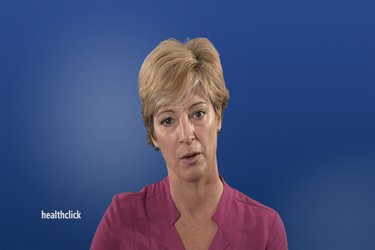
Jennifer Goff, MSPT, NCS, CLT, CVTI have 25 years of experience in neuro geriatrics including a specialty in neuro rehab from the ABPTS.
Learn More about Jennifer GoffFocus of Myofascial Release

- What is myofascial release?
- Current research
- Myofascial release for the aging population
- Contraindications and precautions
- Specific soft tissue techniques
- What is the role of fascia?
- The underlying causes of binding
- What causes facial related pain?
- Fascial plasticity
- Neurological component
- Goals of treatment when performing myofascial techniques
Key Concepts to Know
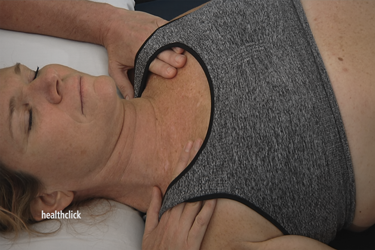
- Evaluation to include posture analysis-key information
- Objective measurement technique to determine curvatures or cervical and thoracic region
- Other key components to the assessment
- Determining the appropriate technique to utilize
- Patient role in treatment
- Follow up after treatment
Techniques for the Upper Body
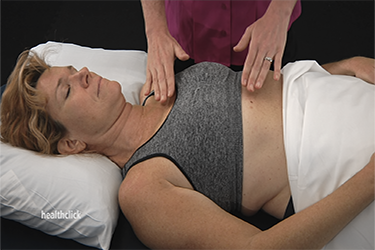
- Addressing forward head posture
- Specific hand techniques
- Techniques for the pectoralis major
- Techniques for the pectoralis minor
- Techniques for the cervical and upper thoracic spine
- Techniques for the sternocleidomastoid
- Techniques for the suboccipitals
- Techniques for the nuchal ligament
- C7-T1 Juncture
- Patient follow up post treatment
- Stretches and Exercises to promote myofascial therapy benefits
- Patient case study: Severe cervical stenosis, bilateral upper extremity paresthesias
Shoulder Techniques
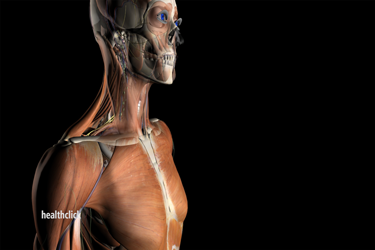
- Techniques to improve range of motion
- Fascial sleeve technique
- Follow up exercises to promote gains made after myfaqsacil treatment
- Case study presentation: Severe DJD, old crush injury to the shoulder
Lumbar Spine Techniques
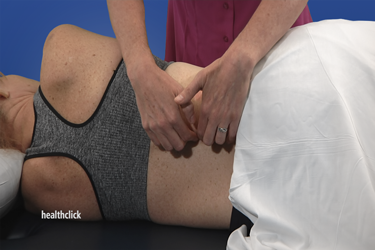
Hip Techniques and Patient Self-Stretch Instruction
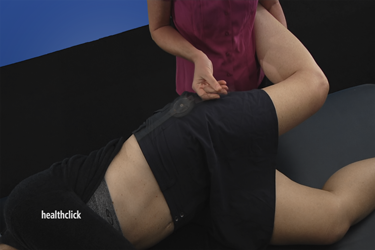
- Techniques for hip flexors
- Technique for hip flexor superficial fascia lengthening
- Follow up exercises and self stretches
- Patient case study: S/p hip fracture, bilateral hip replacements, difficulty with ambulation
Knee Techniques
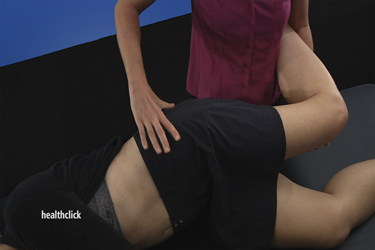
- Myofascial release after a total knee replacement
- Techniques for hamstring
- Techniques for quads
- Techniques for superficial fascia
Ankle Techniques with Self-Care Instruction and Discussion of Case Study
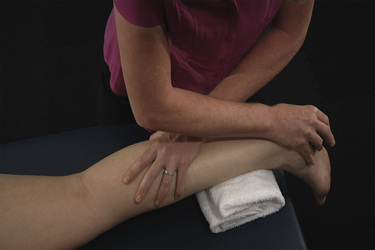
- Techniques for achilles tendon
- Techniques for talocrural joint
- Techniques for plantar fascia
- Techniques for the superficial fascia
- Follow up exercises and self stretches
- Patient case study: 50 year old runner with chronic achilles tendonitis
Course Test - Evaluate your knowledge

- Use the Healthclick proprietary online education system which provides the online student with:
- Worldwide access to high definition video, anatomical animations and images, and written information
- The highest quality film in the industry, you can see the difference!
- Stop and resume within a course, the Healthclick system will optimize your course based on your device, connection and remembers where you left off.
- Real-time course updates. We are always adding to each courses, updating content, adding animations, these are not static courses!
- Evaluate your knowledge with the course test on any device.
- Print your state course certificate for CE credit.
- Take the online test as many times as need in order to achieve a 70 % or greater score.